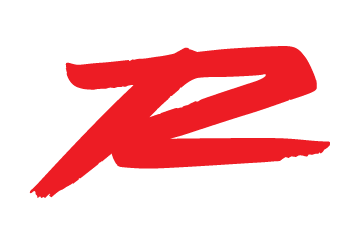The Bones:
- If you don’t use a data/BI tool for your marketing, you should start. It’s a game-changer.
- Here are 10 marketing data visualizations every marketer should have access to.
The Meat:
Think about a recent experience when you were introduced to something new that changed your normal routine. For me, it was wireless earbuds. For the longest time, I didn’t have much interest in them, until I caved to the hype and snagged a pair. Now I’m in love with them and 100% bought in. In fact, I’m pretty much an evangelist now. Same thing with Dr. Pepper with Cream Soda. That stuff is incredible.
Besides the sweet, sweet nectar and improved tunes experience, the most recent routine-altering introduction to my professional career was Domo. It wasn’t so much the software itself that made a significant impact but using real-time data visualizations to help manage my marketing. Before Domo, I was using manually updated spreadsheets and the native analytics features built within each tool I was running. I had data, and I was using it to the best I could, but the data was spread out everywhere and required way too much time and energy to run and maintain. Referencing or comparing data across multiple programs was a challenge, and now as I look back, I admit it was a bit chaotic.
And then came Domo. In short, Domo is a tool that allows you to bring all your data into one place. It does so much more, but if you want to explore it more then you can check out their website here. You may also consider looking at other similar tools like Tableau, Grow, Power BI, and other data software.
Without getting too deep into the Domo platform, I want to share 10 data visualizations that I believe every marketer needs to have access to. In Domo, these visualizations are referred to as “cards.” In no particular order, here are my favorites.
- Goals vs actuals: If you are anything like me, chasing a goal is incredibly motivating. Knowing exactly where I stand in comparison to my goal is a great motivator and helps me stay on track.
- Revenue vs expenses vs budget (with drill down by source): Love this card. Being able to see how much revenue I am driving in relation to my budget and actual expenses is critical, especially when looking at the data by source. This not only gives me ROI information by source but also shows me what is working and what is not.
- MQL vs SQL conversion: This type of visualization is usually best when working with a sales team and is most popular amongst B2B marketers. I like to see how our marketing qualified leads are converting to sales qualified leads. I also like to know which BDRs/SDRs are qualifying the most leads through the funnel.
- Traffic source vs conversion rates: Every business can benefit from this data. When you compare traffic source to conversion rates you can better optimize your time, energy, and resources.
- Total revenue per customer vs customer lifespan (averages): This is how you calculate customer lifetime value (CLTV). To do this, compare the average total revenue from individual customers and the average customer lifespan. This data can help you identify significant customer segments that are most profitable.
- Customer acquisition cost vs average time to close: Both of these data points are extremely important, but comparing them together can help you understand how long it will take you to recover your investment.
- Customer demographics: Pretty standard stuff here. Knowing the basic demographics of your customers will help you create better customer personas, improve your messaging, and optimize your ad spend.
- Active marketing funnel (awareness, consideration, conversion): To manage your sales funnel properly, first you have to have real-time data that can show you the state of things. Seeing conversion rates and fall-off rates at each stage of the funnel can help you understand where to focus more attention.
- 12-month marketing revenue forecast: Having a simple view of what you can expect for the next 12 months can help in so many different ways. To name a few, you know when to increase or decrease spending, can make better staffing decisions, and can keep company leadership informed on what they can expect from you.
- Campaign performance: Knowing which campaigns work the best and which ones flop can help you improve future campaigns. This will also help you better understand what is and what is not important to your customers.
These are some of my favorite marketing data visualizations. Do you have any favorites that are not on this list? I would love to hear about them! If you are not using a data or BI tool, I highly recommend it. Like it did for me, I am positive it will change the way you market.

